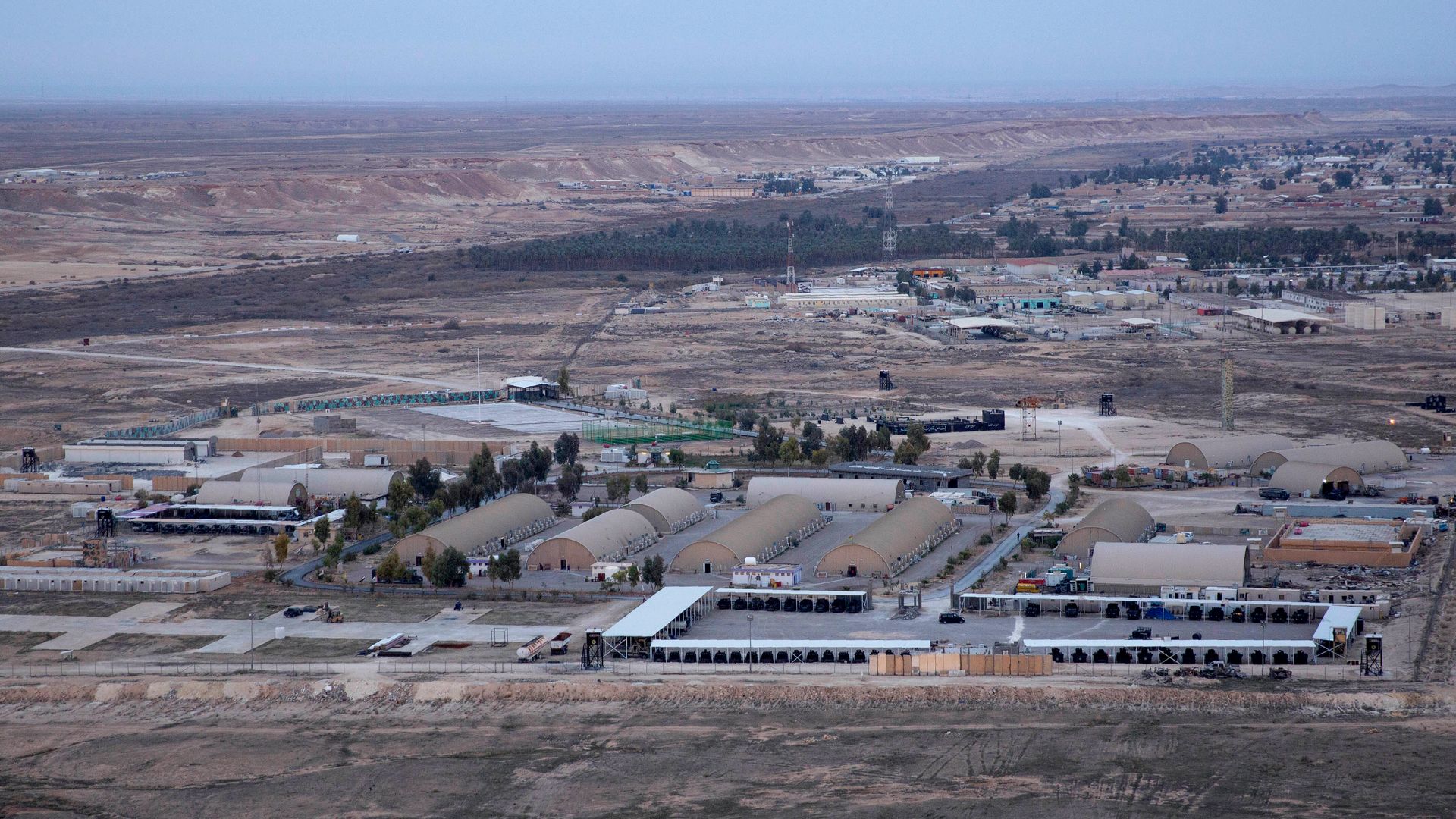
THREE DRONES ATTACKED TWO UNITED STATES MILITARY BASES IN IRAQ. THE ATTACKS ARE MEANT AS RETRIBUTION FOR THE US SUPPORTING ISRAEL IN ITS WAR AGAINST HAMAS TERRORISTS.
U.S. CENTRAL COMMAND SAYS OVER THE SPAN OF 24 HOURS, TWO DRONES ATTACKED THE AL ASAD AIRBASE IN WESTERN IRAQ. ONE DRONE WAS DESTROYED, BUT THE SECOND WAS ONLY DAMAGED AND BREACHED BASE DEFENSES. CENTCOM SAYS AN UNSPECIFIED NUMBER OF SOLDIERS SUFFERED MINOR INJURIES.
IN THAT SAME 24-HOUR TIMESPAN, CENTCOM SAYS A THIRD DRONE TARGETED A BASE IN NORTHERN IRAQ BUT WAS DESTROYED. THERE ARE ALSO REPORTS OF A FOURTH DRONE STRIKE ON A US BASE IN SYRIA.
IN A STATEMENT, CENTCOM SAID “IN THIS MOMENT OF HEIGHTENED ALERT, WE ARE VIGILANTLY MONITORING THE SITUATION IN IRAQ AND THE REGION. WE WANT TO EMPHASIZE U.S. FORCES WILL DEFEND U.S. AND COALITION FORCES AGAINST ANY THREAT.”
SMALL UNMANNED AERIAL SYSTEMS ARE EVERYWHERE IN WARFARE THESE DAYS. THEY’RE EASY TO FLY, CHEAP, AND INCREDIBLY DESTRUCTIVE. TO SUSTAINABLY DEFEND AGAINST THIS KIND OF THREAT, A NEW TYPE OF BASE DEFENSE IS NECESSARY.
LEONIDAS MAY BE THAT SYSTEM. BUILT BY EPIRUS, THE LEONIDAS HIGH POWER MICROWAVE SYSTEM FOR COUNTER ELECTRONIC EFFECTS IS A DRONE KILLER. IT USES HIGH POWER MICROWAVES, OR HPM, TO DEFEAT ELECTRONIC COMPONENTS. MOST HIGH ENERGY LASER SYSTEMS AVAILABLE TODAY CAN EITHER ATTACK SINGLE DRONES, OR SWARMS OF DRONES. THANKS TO SOME PROPRIETARY SOFTWARE, LEONIDAS CAN DO BOTH.
Andrew Wargofchik Imagine the friendly drone flying, flying rather close to an enemy drone, we can take out just that enemy drone. Now, all via software, we can then widen our HPM pulse. So, all with the same system, we can take out a swarm of drones, 10, hundreds, or then narrow that beam if needed to take out just one drone.
ANDREW WARGOFCHIK IS THE COMMUNICATIONS MANAGER FOR EPIRUS. I HAD THE CHANCE TO SPEAK WITH HIM AT THIS YEAR’S AIR SPACE AND CYBER CONFERENCE HOSTED BY THE AIR AND SPACE FORCES ASSOCIATION IN NATIONAL HARBOR, MARYLAND.
HE TOLD ME WHILE THE EXACT PRICE OF THE LEONIDAS SYSTEM IS CLASSIFIED, ONCE IT’S PLUGGED IN AND RUNNING, THE COST TO TAKE OUT DRONES DEPENDS ON HOW MUCH YOU’RE PAYING FOR ELECTRICITY.
THE LEONIDAS SYSTEM IS SCALABLE, MEANING IT CAN BE MADE MORE OR LESS POWERFUL, DEPENDING ON THE NEED. THE MOBILE VARIANT CAN BE MOUNTED TO THE BACK OF A PICKUP TRUCK, OR ON TOP OF AN ARMORED VEHICLE, LIKE THE ARMY’S STRYKER COMBAT VEHICLE. AND OF COURSE, LEONIDAS CAN HELP DEFEND BASES.
Wargofchik: So, you take some Leonidases, you position them, say four or six, around an airbase. You have 360-degree protection against not just drones, but other electronic threats. So, anything with an electronic footprint, it’s going to be vulnerable to our HPM pulse. So, imagine enemy vehicles coming in. We can stop engine motors, we can stop individual drones, we can stop swarms of drones.
BOTH THE WARS IN UKRAINE AND NOW ISRAEL SHOW HOW SUSCEPTIBLE CIVILIAN INFRASTRUCTURE IS TO DRONE ATTACKS AS WELL. SO, WHILE LEONIDAS MAY HAVE MORE MILITARY APPLICATIONS TODAY, WE COULD SEE A LEONIDAS SYSTEM PROTECTING MORE CIVILIAN ASSETS TOMORROW.






